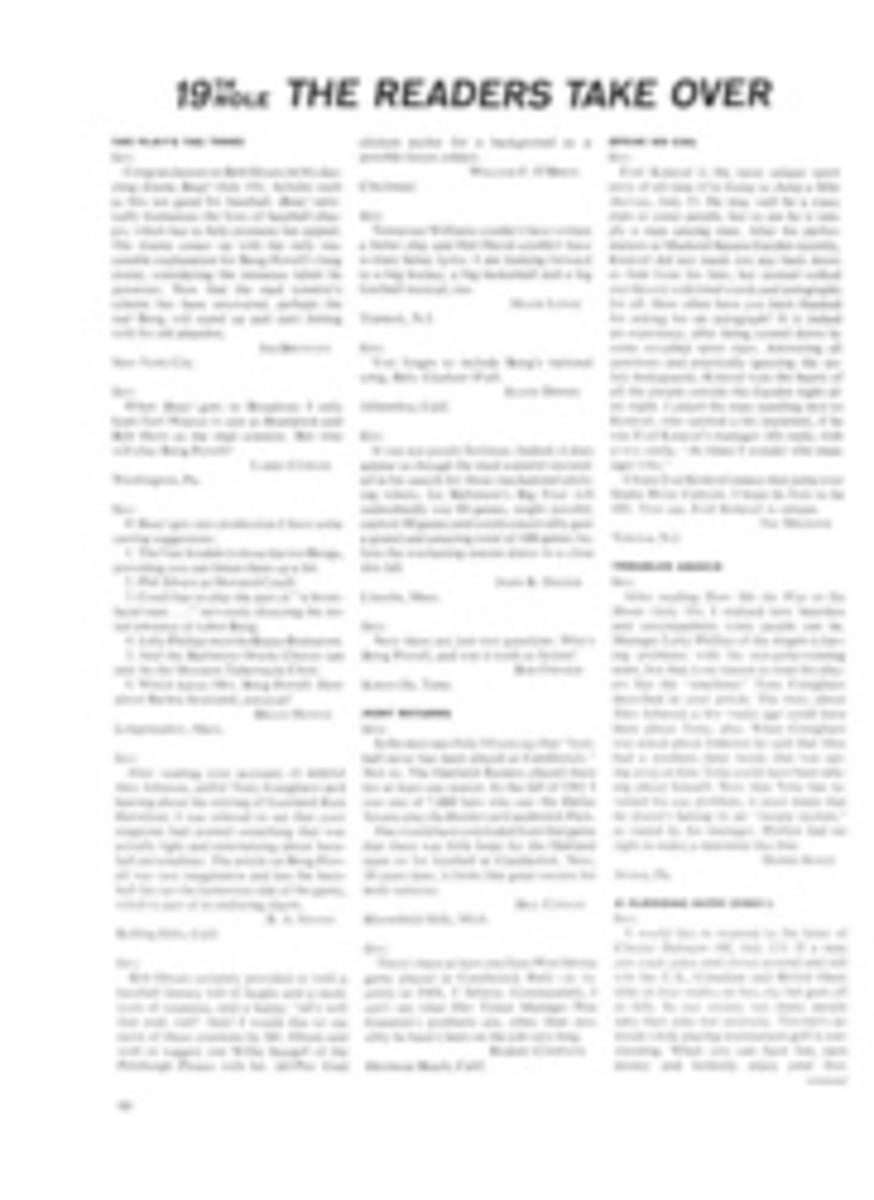
LETTER FROM THE PUBLISHER
Most of us amateur photographers, Instamatic class, spend a good part of our early snapshot-taking careers learning that movement and film don't mix. Hold the camera steady, we are admonished. Everybody look this way and stand still. Eventually, after many years of practice, some of us get to the point where we are able to take pictures that are clear, well lighted and about as animated as a stone umbrella rack. Must it be so?
Phil Leonian, whose photographs on the art of running appear on pages 23-28, not only rejects the theory but counters with one of his own: movement is the best subject of all. It has become a specialty of Leonian's—his SI trademark, in fact—since he first worked with multiple-image effects on an Olympic pentathlon layout which ran in the magazine three years ago.
"It was a lovely experience, photographically and otherwise," he says. "It was my first job for SPORTS ILLUSTRATED and I was able to use so many different tools and techniques. Also, I did it in two days." He has used similar techniques to photograph Ice Skater Janet Lynn, Muhammad Ali and girl gymnasts since then.
The fact that Leonian studied chemistry and biology at the University of West Virginia may provide a clue to his fascination with new methods. In his college years he was forced to experiment, to tackle new problems, devise new techniques and build some fairly novel equipment. Now he says, "If a photographer doesn't invent things, he's left with just a box and a lens, what we've always had."
The multiple-image effects he obtains derive not from mechanics but from mathematics. Leonian spends about twice as much time working out his complicated formulae for printing the pictures as he does in taking them.
Leonian and his wife Edith, who serves as his professional representative and general factotum, live in a terraced apartment on Manhattan's Upper West Side, overlooking Central Park. The photographer enjoys watching the runners and bicyclists who work out 25 stories below, but he is never tempted to join them. "I don't have to be a runner to photograph runners," he says, with what he regards as crushing logic.
Instead, the Leonians look out on the park, entertain friends and occasionally cope with the newest intrusions on breezy Manhattan weekends—colorful kites that flutter up to their windows like lost butterflies. Recently they were sitting on their veranda with SI Deputy Picture Editor Tom Vanderschmidt and his wife Sydnor when a kite came bobbing over their ledge, trailing a ribbon from its tail. Leonian, always in the mood to get acquainted, tied the ribbon around one of his decorative advertising posters and sent the kite back to its owner. That started an aerial exchange, with the kite cast in the role of carrier pigeon.
"That's really what photography is all about," said Leonian. "Sending messages from one to another."
PHOTO ILLUSTRATION
PHOTOGRAPHER PHIL LEONIAN: PORTRAIT OF A MIND-BLURRING INNOVATOR

